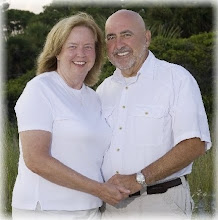“Mile 244.5, {3.6}, Mile Hammock Bay, (34421): Basin dredged out by military for use with Camp LeJeune. Popular anchorage between Morehead City and Wrightsville Beach. Eastern half of basin not dredged! Note marker buoys on chart. Entrance channel and basin dredged to >8’ MLW May 01. Anchor in 10-12’. Use anchor light at night due to military maneuvers. Shoreline is restricted military property. (#4, 12, 52)”
Skipper Bob’s information is accurate and detailed and we use this and some of the other references we mentioned in an earlier post extensively. There is a vast amount of information available for the ICW cruiser, and yet…here it comes…not everything can be predicted.
Today…despite the information readily available…we ran aground. Today…despite the experience of many years of sailing…we ran aground. And I don’t mean just aground. We ran firmly aground and it took many years of sailing experience to get us off. Here’s what happened.
There is a notorious section of the ICW we crossed today near Camp LeJeune where there has been much information published about shoaling and how to avoid the problem. We noted the information and yet when our turn came, we ran aground. We had stopped to refuel at Casper’s just before mile marker 230 and Woody had gone ahead in Marisol. About an hour later, he reported passing the notorious area and had indeed seen shallow water under his keel. He passed a temporary buoy, “61A” on the proper side and had made it through without a problem. He also reported watching a sailboat as big as ours passing the same buoy on the improper side and watching it make it through without a problem. The proper way to pass a green buoy is to keep the buoy to your port (left) side, so we decided to do the practical thing…when it was our turn, we would keep the buoy on our starboard (right) side.
As we approached the notorious “61A” buoy, there were two other large sailboats trying unsuccessfully to pass the buoy on the improper side…keeping it on their right or starboard side. As we got closer, the two boats began motoring north, warning us of the low water as we passed. Because these two sailboats had been having difficulty, we decided to go back to basics and pass the buoy on the proper side, keeping to our left (port) side. We were only about 10’ away from the buoy when we suddenly saw 2.5’ beneath us as we ran aground. We need 5’ and we were now firmly stuck in 2.5 feet of mud and it took almost 20 minutes to get us free.
To paraphrase a famous saying, “It happens!” We had ignored lots of good advice and that was the major reason we had a problem. The good news is that it only delayed us about a half hour and the anchorage was only a few miles beyond where we got stuck. Within an hour, we were anchored in this quiet little cove with two other boats…one our sailing buddy and the other a potential new friend!

If Running Aground Wasn't Enough, the Marines Threatened to Shoot At Us!
The rest of the day was uneventful. We left the Sanitary Restaurant dock in Morehead City in overcast skies and light rain. As we entered the ICW, a light fog settled in and visibility dropped to about a mile. We motored with running lights on as we made it our way along a very narrow channel with shallow water on both sides. After a couple of hours, the sun began shining through and the fog lifted…life was good!
We stopped for diesel fuel and took on almost 70 gallons. A quick calculation tells us that Windreka consumes 1.5 gallons of diesel fuel every hour the motor is running. That allows us to motor at a speed of just under 10 miles per hour…not too fast, but just fast enough.

The View From Our "Office"


No comments:
Post a Comment